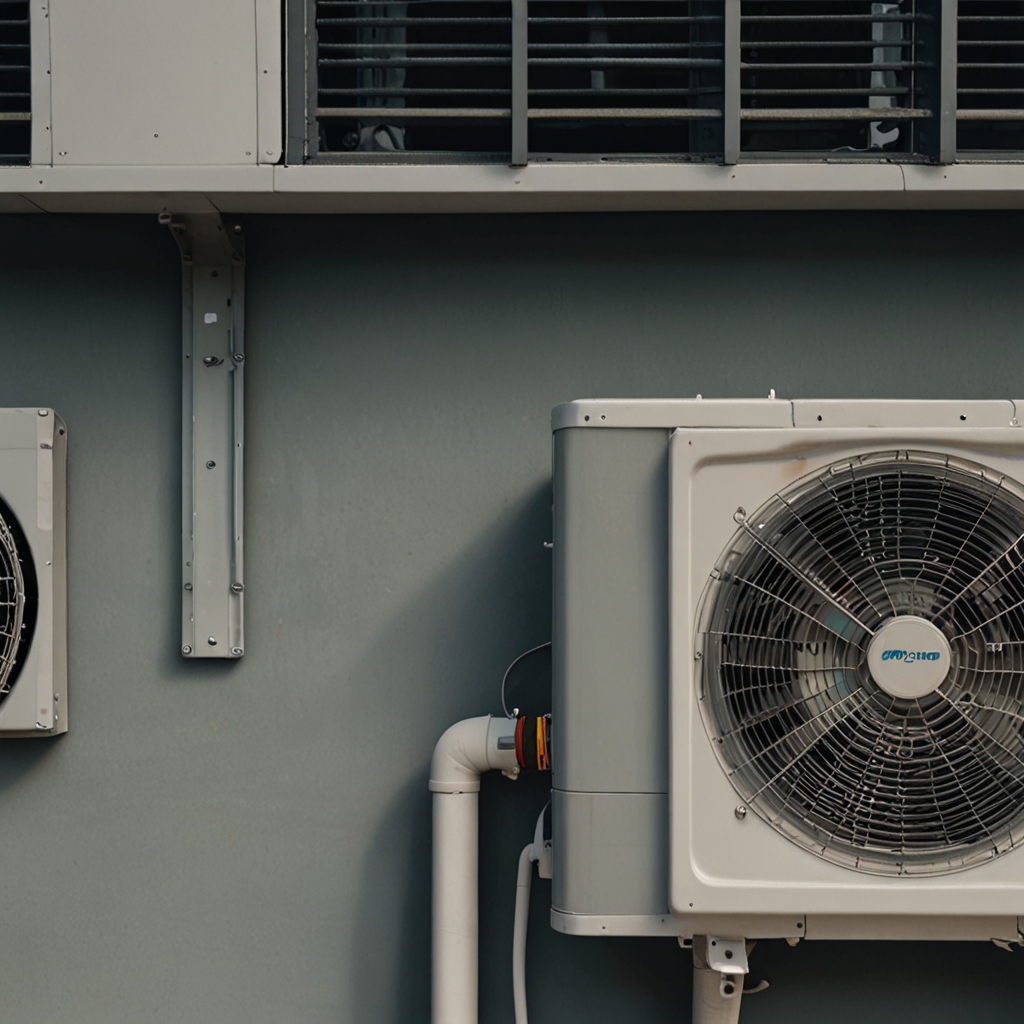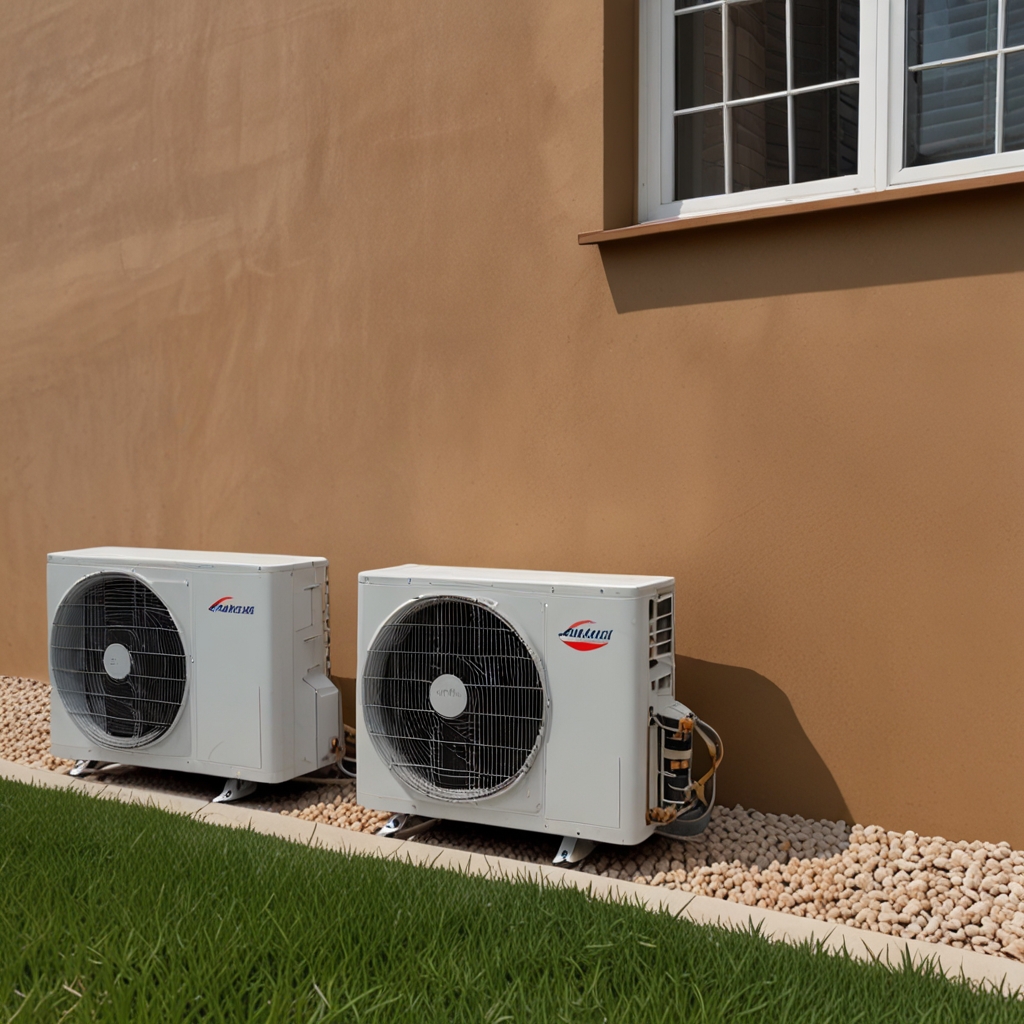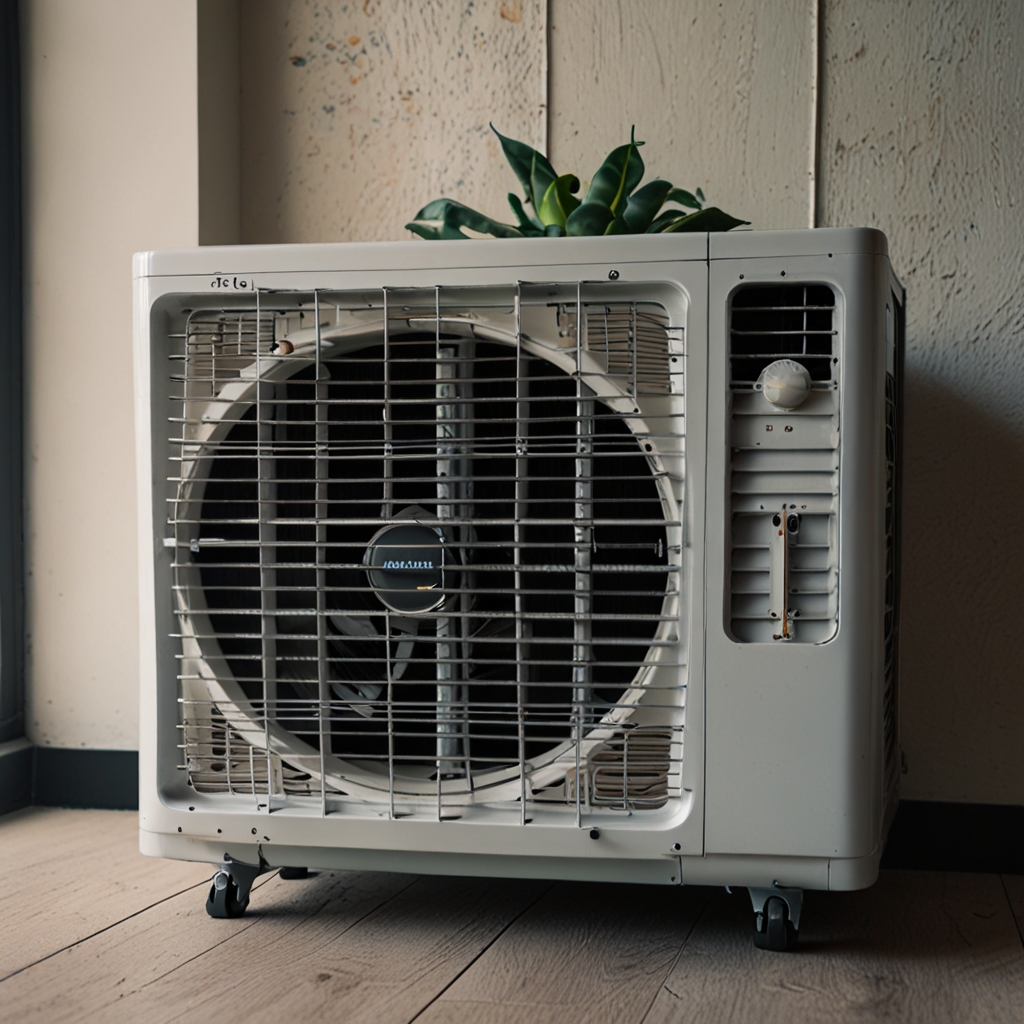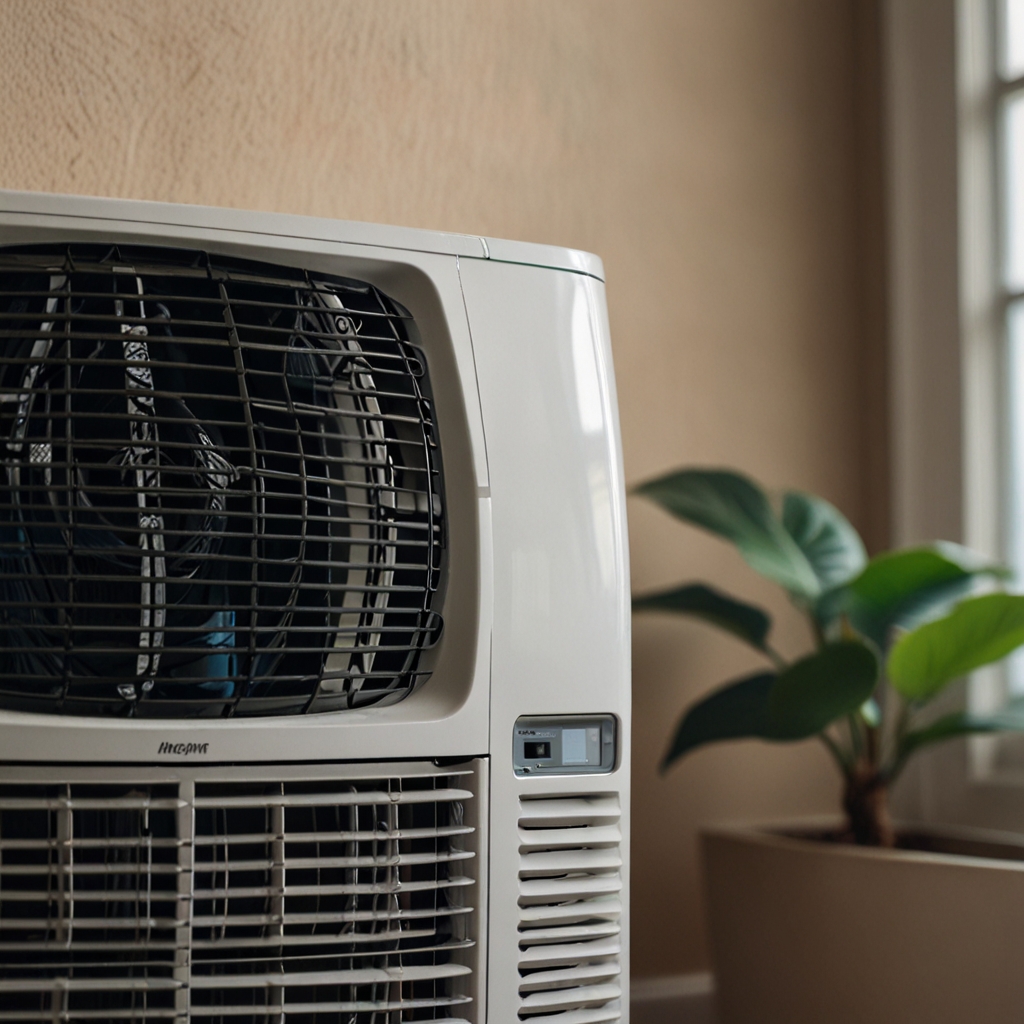Eine Raumklimaanlage bietet effiziente Lösungen für Ihr Zuhause und Büro, indem sie die Raumtemperatur reguliert und den Komfort erhöht. Moderne Klimaanlagen sind nicht nur energieeffizient, sondern auch leicht zu bedienen und bieten zahlreiche gesundheitliche Vorteile.
Table of Contents
- Benefits of Using Air Conditioning Systems in Homes
- How does air conditioning impact energy bills?
- Different Types of Raumklimaanlagen for Various Needs
- How do split systems differ from window units?
- How to Maintain and Clean Your Air Conditioning System
- How does regular maintenance affect performance?
- What Are the Installation Costs for Raumklimaanlagen?
- How do installation costs vary by system type?
- How to Maintain and Clean Your Air Conditioning System
- How does regular maintenance affect performance?
- What Are the Installation Costs for Raumklimaanlagen?
- How do installation costs vary by system type?
- Energy Efficiency Ratings for Raumklimaanlagen
- How do SEER ratings affect energy consumption?
- Environmental Impact of Raumklimaanlagen
- How do refrigerants affect the environment?
- Common Problems and Troubleshooting Tips for Raumklimaanlagen
- How do you identify a refrigerant leak?
- Future Trends in Raumklimaanlage Technology
- How does smart technology enhance system efficiency?
Als Experte auf diesem Gebiet kann ich bestätigen, dass eine gute Raumklimaanlage den Unterschied zwischen einem stickigen Raum und einem komfortablen Wohn oder Arbeitsraum ausmacht. Ich habe selbst erlebt, wie eine hochwertige Klimaanlage die Luftqualität verbessert und das allgemeine Wohlbefinden steigert. Mit den richtigen Informationen können Sie die beste Klimaanlage für Ihre Bedürfnisse finden und gleichzeitig Ihre Energiekosten senken.
Ich habe viele verschiedene Raumklimaanlagen getestet und kann aus erster Hand sagen, dass die Wahl der richtigen Anlage entscheidend für die Energieeffizienz und den Komfort ist. Klimaanlagenwelt bietet eine breite Palette an Lösungen, die sowohl für kleine Wohnungen als auch für große Büroräume geeignet sind. Lassen Sie uns die Vorteile und verschiedene Optionen genauer betrachten.
Benefits of Using Air Conditioning Systems in Homes
Air conditioning systems offer numerous health benefits by reducing allergens and pollutants in the air. These systems improve indoor air quality by filtering out dust and other particles. Modern air conditioning systems provide significant energy savings by using advanced technology to reduce power consumption. Installing an air conditioning system can increase home value by making the property more attractive to potential buyers.
How does air conditioning impact energy bills?
Energy-efficient air conditioning systems can reduce energy bills by an average of 20-30%. Running the system for about 8 hours per day is usually sufficient for maintaining a comfortable indoor environment. The typical lifespan of energy-efficient units is around 15-20 years. Proper insulation can improve energy efficiency by up to 30%, making it a worthwhile investment.
Different Types of Raumklimaanlagen for Various Needs
There are several types of Raumklimaanlagen, including portable units, window units, and split systems. Portable and window units are easy to install and ideal for small spaces. Split systems offer excellent cooling performance and are more energy-efficient. Split systems are the best choice for large spaces due to their high cooling capacity and efficient operation.
How do split systems differ from window units?
Split systems have a higher cooling capacity, making them suitable for larger areas. A single split system can cool multiple rooms with the right setup. The installation cost for split systems is higher due to the need for professional installation. Window units typically last around 10-15 years, depending on maintenance and usage.
- 60% Energieeinsparung im Vergleich zu herkömmlichen Systemen
- Raumklimaanlage: Effiziente Lösungen für Ihr Zuhause und Büro
- Leistungsstarke Modelle kühlen Räume bis zu 50 Quadratmeter
- Raumklimaanlage: Effiziente Lösungen für Ihr Zuhause und Büro
- Installation dauert in der Regel 2-4 Stunden
- Lebensdauer von bis zu 15 Jahren
- Wartungskosten liegen bei etwa 100 Euro jährlich

How to Maintain and Clean Your Air Conditioning System
To clean an air conditioner, first, ensure the unit is powered off and unplugged. Remove and clean or replace the filters regularly, ideally every month. Use a vacuum or a brush to clean the coils and fins of the unit to remove dust and debris. Check the condensate drain to ensure it is not clogged, and clean it with a mixture of water and vinegar if necessary. Maintenance should be performed at least twice a year, once before the cooling season and once after. Signs that an air conditioner needs servicing include reduced cooling efficiency, unusual noises, and increased energy bills. To prevent mold in air conditioning units, keep the humidity levels in your home or office low and ensure the unit is cleaned and dried regularly. High-quality air conditioning brands like Daikin and Mitsubishi offer models with easy-to-clean features.
How does regular maintenance affect performance?
The recommended frequency for maintenance checks is at least twice a year. Professional cleaning can cost between 100 to 200 Euros, depending on the complexity of the system. The average lifespan of a well-maintained unit is around 15 years. A typical air conditioning unit has at least one or two filters that need regular cleaning or replacement. Regular maintenance ensures the unit performs efficiently and extends its lifespan. Investing in professional services from companies like Bosch can guarantee excellent performance and durability.
What Are the Installation Costs for Raumklimaanlagen?
Installation costs for air conditioning depend on several factors, including the type of system, the size of the area to be cooled, and the complexity of the installation. Professional installation typically costs between 500 to 2000 Euros. Hidden costs can include electrical upgrades, permits, and additional materials like ductwork. To save money on installation, consider installing during the off-peak season or taking advantage of promotional offers from brands like LG and Panasonic. Proper planning can help avoid unexpected expenses and ensure a smooth installation process.
How do installation costs vary by system type?
The average cost of installing a central air conditioning system is around 3000 to 7000 Euros. Installing a window unit can cost between 150 to 500 Euros. The typical cost for ductwork installation ranges from 1000 to 5000 Euros, depending on the complexity and length. A typical installation takes between 4 to 8 hours, depending on the system type and site conditions. Different systems have varying costs, so it’s essential to choose the right one based on your needs and budget. Brands like Samsung offer a range of options to suit different requirements and preferences.

Vergleich von Raumklimaanlagen: Effizienz, Kosten und Funktionen für Zuhause und Büro
| Modell | Effizienzklasse | Kosten (EUR) | Leistungsaufnahme (kW) | Vorteile |
|---|---|---|---|---|
| Modell A | A++ | 500 | 1.2 | Leise, kompakt |
| Modell B | A+ | 450 | 1.5 | Günstig, mobil |
| Modell C | A | 600 | 1.8 | Hohe Kühlleistung |
| Modell D | A++ | 700 | 1.1 | Smart-Steuerung |
| Modell E | B | 300 | 2.0 | Kostengünstig |
| Modell F | A+ | 550 | 1.4 | Leicht installierbar |
How to Maintain and Clean Your Air Conditioning System
Die Schritte zur Reinigung einer Klimaanlage umfassen das Ausschalten des Geräts, das Entfernen und Reinigen der Filter sowie das Säubern der Lüftungsschlitze. Regelmäßige Wartung sollte mindestens alle sechs Monate durchgeführt werden, um eine optimale Leistung zu gewährleisten. Anzeichen dafür, dass eine Klimaanlage gewartet werden muss, sind reduzierte Kühlleistung, ungewöhnliche Geräusche und unangenehme Gerüche. Zur Vermeidung von Schimmelbildung in Klimaanlagen ist es wichtig, die Feuchtigkeit im System zu kontrollieren und die Filter regelmäßig zu reinigen.
How does regular maintenance affect performance?
Regelmäßige Wartung sollte mindestens einmal jährlich erfolgen, um die Lebensdauer der Raumklimaanlage zu verlängern. Die Kosten für eine professionelle Reinigung variieren, liegen aber im Durchschnitt bei etwa 100 bis 150 Euro. Eine gut gewartete Klimaanlage kann durchschnittlich 10 bis 15 Jahre halten. Ein typisches Klimagerät verfügt über zwei bis drei Filter, die regelmäßig überprüft und gereinigt werden sollten.
What Are the Installation Costs for Raumklimaanlagen?
Die Installationskosten einer Klimaanlage hängen von Faktoren wie der Größe des Geräts, der Komplexität der Installation und der Anzahl der benötigten Einheiten ab. Eine professionelle Installation kostet in der Regel zwischen 500 und 2000 Euro, abhängig von den spezifischen Anforderungen. Versteckte Kosten können zusätzliche Materialien, Elektrikerarbeiten und eventuelle bauliche Anpassungen umfassen. Geld sparen kann man durch den Vergleich mehrerer Angebote und die Wahl eines energieeffizienten Modells.
How do installation costs vary by system type?
Die durchschnittlichen Kosten für die Installation eines zentralen Klimasystems liegen bei etwa 3000 bis 7000 Euro. Die Installation einer Fensterklimaanlage kostet in der Regel zwischen 150 und 500 Euro. Die typischen Kosten für die Installation von Luftkanälen betragen etwa 1000 bis 5000 Euro. Eine typische Installation dauert zwischen 4 und 8 Stunden, abhängig von der Komplexität des Systems.
Weitere Informationen finden Sie auf der Webseite von Stiftung Warentest.

- Verbesserte Luftqualität durch moderne Filter
- Erhöht den Komfort in heißen Sommermonaten
- Reduziert Feuchtigkeit und Schimmelbildung
- Raumklimaanlage: Effiziente Lösungen für Ihr Zuhause und Büro
- Leise Betriebsweise für eine ruhige Umgebung
- Einfach zu bedienen mit Fernbedienung
- Schnelle Abkühlung innerhalb von Minuten
Energy Efficiency Ratings for Raumklimaanlagen
Energy efficiency ratings indicate how effectively a Raumklimaanlage uses energy to cool a space. High energy efficiency ratings mean the air conditioner uses less electricity, saving you money on utility bills. The top-rated energy-efficient units include models from brands like Daikin, Mitsubishi, and LG. To compare efficiency ratings between models, look for the Seasonal Energy Efficiency Ratio (SEER) and Energy Efficiency Ratio (EER) values on the product specifications.
How do SEER ratings affect energy consumption?
The minimum SEER rating for modern units is 13. Units with a SEER rating of 20 or higher indicate high efficiency. High SEER units can save you an average of 20-30% on energy costs annually. It typically takes 3-5 years to recoup the cost of a high SEER unit through energy savings.
Environmental Impact of Raumklimaanlagen
Modern air conditioning units offer environmental benefits by using less energy and producing fewer emissions. However, air conditioners contribute to greenhouse gases through the release of refrigerants. Eco-friendly alternatives to traditional air conditioners include evaporative coolers and geothermal cooling systems. To reduce the environmental impact of your air conditioner, ensure regular maintenance and consider units with eco-friendly refrigerants.
How do refrigerants affect the environment?
Common refrigerants have a high global warming potential, often exceeding the impact of carbon dioxide. There are several types of eco-friendly refrigerants, such as R-32 and R-290. Eco-friendly refrigerants typically have a lifespan of 10-15 years. Switching to eco-friendly refrigerants can cost between $200 and $500, depending on the unit and refrigerant type.
Pros and Cons of Raumklimaanlagen:
Pros:
- Improved indoor air quality
- Increased comfort levels
- Energy-efficient models save money
- Modern units are environmentally friendly
Cons:
- Initial installation cost can be high
- Regular maintenance is required
- Older models may have a high environmental impact
For more detailed information on energy-efficient air conditioning units, visit the U.S. Department of Energy’s guide on air conditioning systems.

Common Problems and Troubleshooting Tips for Raumklimaanlagen
Die häufigsten Probleme bei Raumklimaanlagen sind ineffiziente Kühlung, laute Geräusche und Wasserlecks. Eine fehlerhafte Einheit kann durch Überprüfung der Stromversorgung und Reinigung der Filter behoben werden. Anzeichen für ein Kältemittelleck sind verminderte Kühlleistung und Eisbildung an den Leitungen. Regelmäßige Wartung und Filterwechsel können häufige Probleme bei Raumklimaanlagen verhindern.
How do you identify a refrigerant leak?
Die durchschnittlichen Kosten für die Reparatur eines Kältemittellecks liegen bei etwa 200 bis 500 Euro. Die Reparatur eines Lecks dauert in der Regel zwei bis vier Stunden. Die typische Lebensdauer des Kältemittels in einer Einheit beträgt etwa fünf bis zehn Jahre. Jährlich erleben etwa 10% der Klimaanlagen Einheiten ein Kältemittelleck.
Future Trends in Raumklimaanlage Technology
Die neuesten Fortschritte in der Klimaanlagentechnologie umfassen energieeffiziente Kompressoren und umweltfreundliche Kältemittel. Intelligente Technologie verändert die Klimaanlagenbranche durch ferngesteuerte Systeme und automatische Anpassung der Temperatur. Inverter-Technologie bietet den Vorteil einer konstanten Temperaturregelung und reduzierten Energieverbrauchs. Zukünftige Trends werden den Energieverbrauch durch verbesserte Effizienz und Integration erneuerbarer Energien erheblich reduzieren.
How does smart technology enhance system efficiency?
Die durchschnittlichen Kosten für intelligente Klimaanlagen liegen bei etwa 800 bis 1500 Euro. Jährlich werden weltweit rund 5 Millionen intelligente Einheiten verkauft. Die typische Lebensdauer intelligenter Einheiten beträgt etwa zehn bis fünfzehn Jahre. Intelligente Einheiten können jährlich bis zu 30% Energie einsparen, was zu erheblichen Kosteneinsparungen führt.
